Feeling stuck in a content creation rut? Wish you could transform your ideas into marketing gold that actually resonates with your audience? In this blog post, we’ll explore the insightful conversation I had with Emily Aborn, host of the Content with Character podcast and expert copywriter, on how to create engaging content that people crave.
A Pivot from Guest-Driven to Solo Success
Emily’s journey is a masterclass in adaptation and self-discovery. Her initial podcast, "She Built This," focused on showcasing women entrepreneurs. While successful in building a community, Emily realized it wasn't aligning with her core copywriting business.
This led to a strategic pivot. After a session with a podcast strategist similar to what we do at Pedal Stomper Productions, Emily made the brave decision to launch a second podcast, Content with Character, focusing on the very craft that fueled her primary business. This wasn't just a rebrand; it was a complete transformation.
The shift to a solo podcast, Content with Character, provided an outlet for her endless well of content ideas. Emily maintains a Google Doc overflowing with over 300 ideas, drawn from everyday experiences, client questions, and her own unique perspective on content marketing. She also finds inspiration from other podcasts, often using disagreements with a point to spark her own fresh perspective.
Key Takeaways from Years of Podcasting
Emily's podcasting journey offers invaluable lessons applicable far beyond the microphone. She highlights two major takeaways:
The Power of Collaboration: Podcasting opens doors to unexpected collaborations. Emily has forged deep friendships, business partnerships, and expanded her expertise through connections made on and around the podcast. It's a testament to the power of networking and building authentic relationships within a shared passion.
Message Refinement: The iterative nature of podcasting allows for continuous message refinement. Emily finds that repeatedly expressing her ideas and beliefs hones her core message, clarifying her perspective and solidifying her brand voice.
Actively Listening to Audience Needs
Emily emphasizes the importance of audience-centric content. Instead of broadcasting a message, she prioritizes conversations. She actively listens for recurring themes and questions from various interactions: client calls, workshops, and even casual conversations. This is not a passive exercise; it's about actively identifying audience struggles and transforming them into podcast topics. Often, her post-production reflection is where podcast gold emerges. This is very similar to what Elisa B. Bennett said during our conversation with her. Elisa's Podcast
Simplifying Your Message Without Losing Impact
Emily's copywriting business is built on a foundation of simplicity and clarity. She emphasizes the importance of targeting a single person in your messaging, even when speaking to a larger audience. This personalized approach fosters connection.
She cautions against focusing solely on features, arguing that emotional benefits and demonstrable value are far more compelling. Instead of detailing technical specifications, highlight how a product or service will transform the client's life.
Examples of Audience-Centric Businesses
Emily highlights Airbnb and Apple as businesses that excel at audience-centric marketing. Airbnb’s commercials powerfully contrast the impersonal nature of traditional hotels with the personal touch of Airbnb experiences, resonating deeply with travelers. Apple's messaging, while often simple, effectively taps into the emotional desires of its target audience.
Mastering the Art of the Bio
Emily’s "How to Write About Yourself" podcast episode, inspired by observing numerous ineffective bios, emphasizes the importance of a concise, engaging biography. She offers a simple solution: avoid jargon and word salads; lead with a captivating hook that immediately grabs the reader's attention and showcases the benefits of engaging with you.
Repurposing Content: Long-Form First vs. Social First
Emily discusses two distinct approaches to content repurposing:
Long-Form First: Create a long-form piece (podcast, blog, newsletter) and then break it down into smaller, shareable snippets for social media.
Social First: Identify recurring themes from social media posts and weave them into a longer piece of content.
Both approaches offer efficient ways to create consistent content, maximizing the impact of your work.
Transforming Podcast Transcripts into Engaging Blog Posts
Emily recommends using AI tools (such as Otter.ai) to create an outline from a podcast transcript. This outline provides a solid framework for creating a compelling blog post, allowing you to translate the podcast's essence into written form while adding your unique voice and expanding on key points.
Consistency vs. Frequency
Emily emphasizes that consistency in content creation doesn't necessarily equate to high frequency. She highlights the importance of choosing a realistic and sustainable schedule, aligning with one's capacity and workload. It’s better to produce a high-quality piece less frequently than to churn out low-quality content frequently.
Conducting a Marketing Audit
To assess a realistic content schedule, Emily suggests a marketing audit. This involves a thorough inventory of all marketing commitments (events, sponsorships, etc.). This allows for better time management and ensures that additional commitments are feasible. She also stresses the importance of considering the hidden time investment involved in content creation; it’s often far more extensive than initially perceived.
Prioritizing the Audience
Emily emphasizes the importance of understanding audience needs. She suggests connecting directly with customers through calls or networking events. This allows for firsthand insights into their challenges and desires, ensuring created content addresses their real needs.
One Final Piece of Advice
The best piece of advice Emily ever received? Get out of your office and meet people. Networking, whether in-person or online, provides invaluable opportunities for connection and learning, leading to unexpected partnerships and collaborations.
Ready to Elevate Your Content Game?
Emily's journey and insights offer a clear path to create impactful marketing content. By prioritizing your audience, simplifying your message, and repurposing your efforts, you can transform your ideas into a powerful marketing engine.
Here’s how you can take the next step:
Listen to the full podcast episode: Experience the conversation in its entirety for deeper insights. Apple Podcasts, Spotify, Buzzsprout
Watch the podcast: Get the benefit of visual cues and engaging storytelling in the video version. Emily’s Conversation
Book a 30-minute "no-pitch" podcast presentation: Let's discuss your content strategy and how we can help you create compelling content that drives results. Let's get started!






